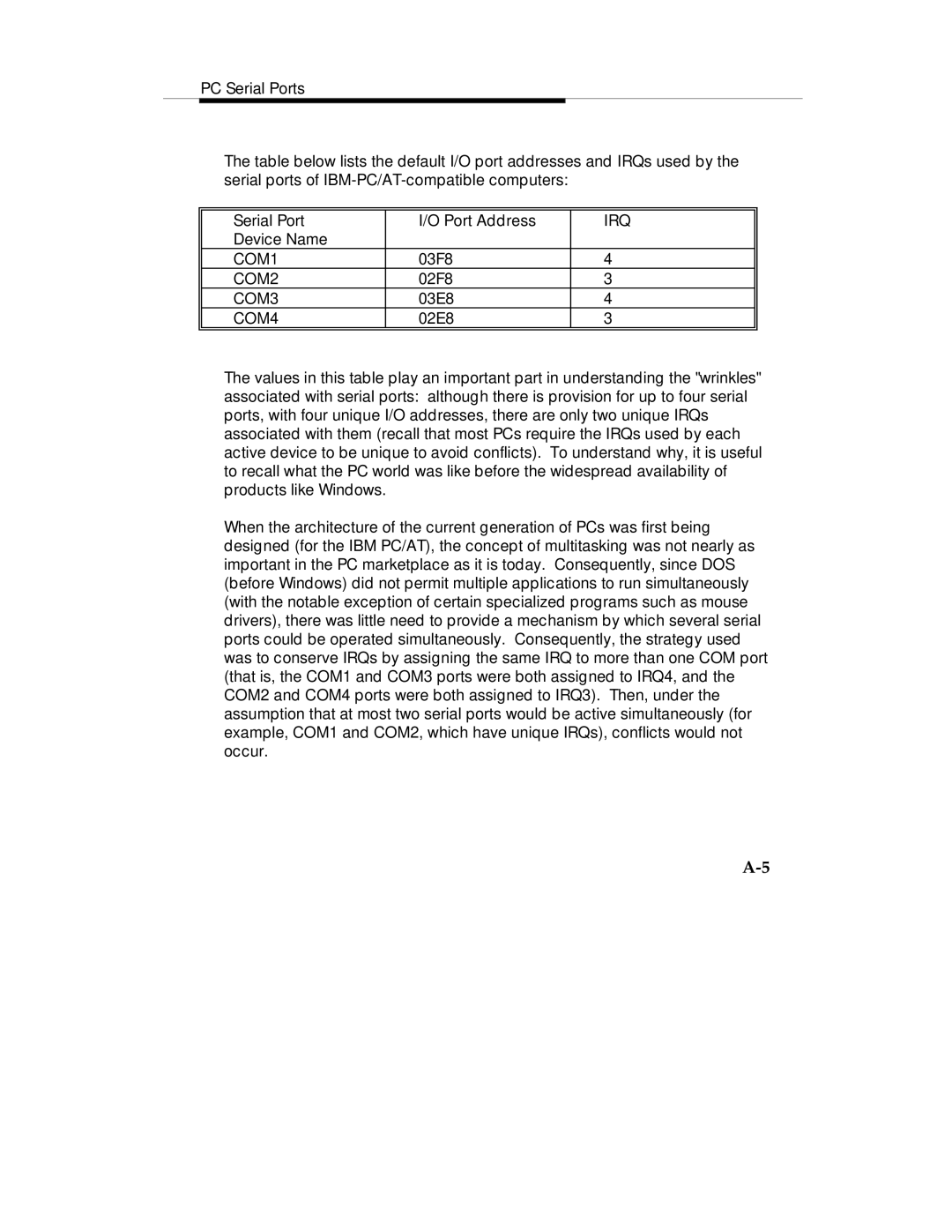PC Serial Ports
The table below lists the default I/O port addresses and IRQs used by the serial ports of
Serial Port | I/O Port Address | IRQ |
Device Name |
|
|
COM1 | 03F8 | 4 |
COM2 | 02F8 | 3 |
COM3 | 03E8 | 4 |
COM4 | 02E8 | 3 |
|
|
|
The values in this table play an important part in understanding the "wrinkles" associated with serial ports: although there is provision for up to four serial ports, with four unique I/O addresses, there are only two unique IRQs associated with them (recall that most PCs require the IRQs used by each active device to be unique to avoid conflicts). To understand why, it is useful to recall what the PC world was like before the widespread availability of products like Windows.
When the architecture of the current generation of PCs was first being designed (for the IBM PC/AT), the concept of multitasking was not nearly as important in the PC marketplace as it is today. Consequently, since DOS (before Windows) did not permit multiple applications to run simultaneously (with the notable exception of certain specialized programs such as mouse drivers), there was little need to provide a mechanism by which several serial ports could be operated simultaneously. Consequently, the strategy used was to conserve IRQs by assigning the same IRQ to more than one COM port (that is, the COM1 and COM3 ports were both assigned to IRQ4, and the COM2 and COM4 ports were both assigned to IRQ3). Then, under the assumption that at most two serial ports would be active simultaneously (for example, COM1 and COM2, which have unique IRQs), conflicts would not occur.
